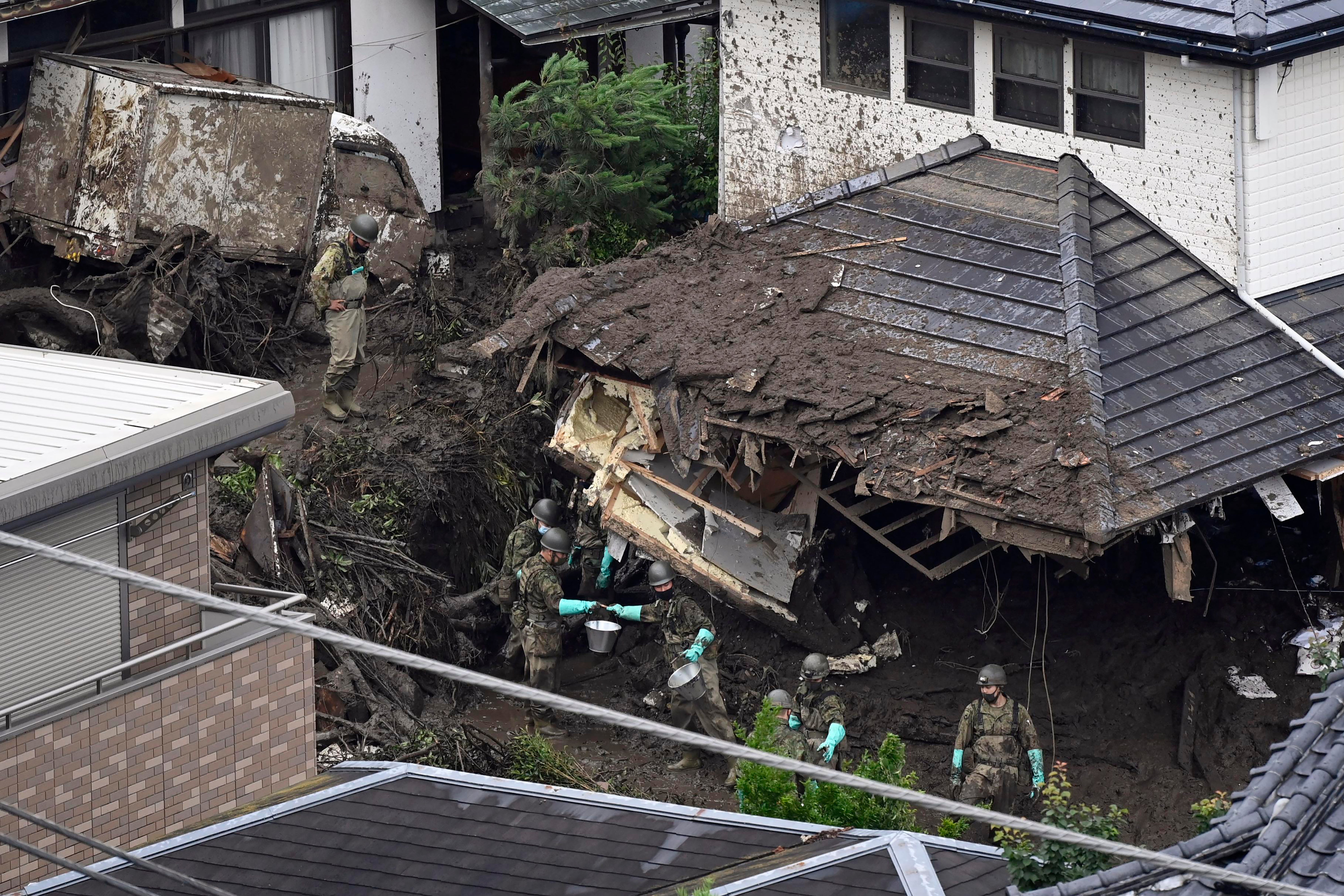Massive soil mound on slope seen as worsening Japan mudslide
Officials say the mudslide that destroyed dozens of homes in a Japanese seaside resort started from an area with a history of land alternations and a massive soil mound there broke off and amplified the damage

The mudslide that destroyed dozens of homes in a Japanese seaside resort, killing at least seven people, started from an area with a history of land alternations and a massive soil mound there broke off and amplified the damage, officials said Wednesday.
They say, however, more investigation and analysis are needed to determine if the mound of soil was the primary cause of the disaster in Atami, where on Wednesday, hundreds of rescue workers and dogs cautiously searched for the missing inside homes destroyed and filled with mud.
Twenty-seven people still could not be reached and were possibly hit by the mudslide Saturday, according to Shizuoka prefecture and Atami city officials. Determining the numbers was difficult because many Atami residences are second homes or vacation rentals.
The mud exposed after the slide ripped into streets and homes was distinctively black, showing it contained large amounts of the abandoned soil from the area where land alterations had been made.
The mound of soil was inadequately built and accounted for about half the volume of the preceding or subsequent landslide, Shizuoka prefecture vice governor Takashi Namba said after an initial rough assessment.
“We can at least say that the severity of the disaster was amplified by the more than 50,000 tons of the soil mound that had been sitting there,” said Namba, a former land ministry bureaucrat and a civil engineer.
He noted the area had other land alterations and development, including a solar power generation complex, deforestation, a land development for housing complex and apparently illegal industrial waste dumping. He said geological details suggest the solar complex and housing development were not the cause of the mudslide, though further examination is needed.
The mound had been there since 2010 or even earlier and contained plastic and other waste, suggesting it was a waste dump rather than for development, Namba said. He also believes it was built poorly, without adequate drainage in a location rich with groundwater.
Officials are also checking ownership changes related to the mound and other projects.
An assessment is planned of other land developments around the country, land ministry officials said.
The landslide occurred after days of heavy rain in Atami, which like many seaside towns in Japan is built into a steep hillside. The town has a registered population of 36,800 and is about 100 kilometers (60 miles) southwest of Tokyo
The disaster is an added challenge for Prime Minister Yoshihide Suga as authorities prepare for the Tokyo Olympics, starting in about two weeks. Japan is still struggling with the coronavirus pandemic.
Early July, near the end of Japan’s rainy season, is often a time of deadly floods and mudslides, and many experts say the rains are worsening due to climate change.